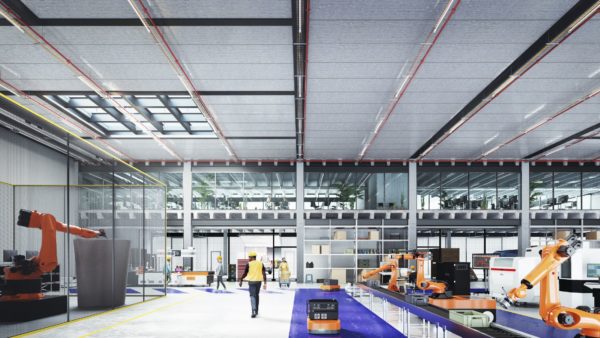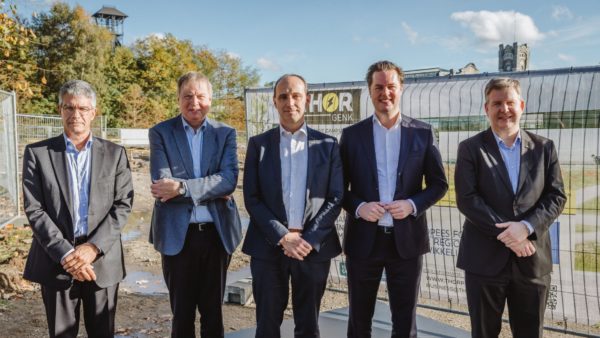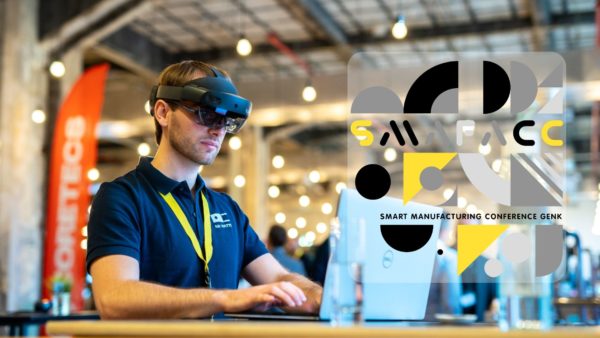With 28 high-tech companies at the IncubaThor, Thor Park – home base of EnergyVille in Genk (Limburg) – has developed into one of the most important research and innovation sites on sustainable and smart energy in our country. It’s therefore no coincidence that grid manager Elia turned to EnergyVille for the joint development of innovative applications to support and accelerate energy transition.
Why are the challenges associated with energy transition so different from what a technology company like Elia is used to?
Loïc Tilman (Head of Innovation & Digitech at Elia): Our main mission is traditionally to ensure energy security for all energy consumers in this country, day and night. So far, energy has mainly been provided by coal, gas and nuclear power stations, guaranteeing a fairly constant and predictable supply. The energy transition we are now facing will completely change our way of working. In terms of production, infrastructure and system management, our mindset needs to change drastically. And changes are coming at an enormous speed. In the next few years, an increasing share of our energy will come from sustainable energy sources. Fluctuations in this decentralised supply will have a stronger impact. If we want to further ensure energy security for our customers, we need to find a smart way to match demand with production.
Daan Six (Research Program Manager at VITO / EnergyVille): The energy ecosystem as a whole has become much larger and more complex in a short period of time. It’s no longer a simple ‘top-down’ value chain with production, transmission, distribution and supply, but a distributed ‘value network’. You can compare it to a spider’s web, if you will, where every thread is useful and necessary to keep the web stable. The energy transition is also attracting players from totally different sectors: from (electric) car manufacturers to manufacturers of (smart) electric appliances as well as start-ups providing new energy services. The need for innovation is so big that none of the players can take up this challenge alone, hence the collaboration between grid manager Elia and the research institute EnergyVille.
Can you give a concrete example of that collaboration?
Loïc Tilman: Well, we have examined how Elia can already deploy gigantic batteries with an enormous storage capacity as an alternative to the drastic adjustments of our grid infrastructure to cope with greater fluctuations in power supply. EnergyVille has built up considerable expertise in this field. Our research has demonstrated that batteries can currently support grid balancing, but they cannot yet replace the development of high-voltage infrastructure.
EnergyVille has been researching innovative technology for years now to support energy transition. So where do we stand today?
Daan Six: In recent years we have focused on potential flexibility sources to better match supply with demand. We are not only looking at industrial processes that we can make flexible, but also at individual consumers who become a minor producer themselves with their solar panels. For some time now, we’ve also been investigating how home batteries, electric cars or smart appliances will eventually allow us to respond almost automatically to the available energy supply and the needs of the energy system. Today, the latest technology enables us to even better match flexible energy demand with supply.
What makes digitisation so crucial in energy transition?
Loïc Tilman: Our energy system will become more complex, but we don’t want any of the users noticing. Artificial intelligence will therefore play a more important role in the optimisation of power consumption. Local consumer data and information can be used to automatically align the consumption of as many appliances and applications as possible with total power production. This starts with smart meters and will also translate in the coming years into connected appliances using artificial intelligence to automatically determine the best time for switching on and off the device. In this way, we can avoid peaks in usage and thus grid overloads. The consumer will ultimately benefit in terms of both costs and user experience.
Technological innovation is the common thread throughout this story, but that alone will probably not be sufficient: how do you convince the end user to go along with the whole paradigm shift?
Daan Six: That aspect is indeed particularly important. The average consumer doesn’t lose any sleep over how energy is supplied. He mainly wants security and comfort. That’s why I strongly believe in energy as a service story: energy is evolving into a service, where the underlying technology not only fully unburdens the user, but also allows them to actively participate in the energy market. All you have to do is set a few preferences and parameters. No need to switch on or off the washing machine yourself, just indicate when the washing should be done. The system will then automatically define the optimal time to start the washing machine. The same principle can be applied to an electric vehicle or a heat pump with a heat storage unit. Digitisation is thus extended to the end user and ensures smart energy consumption and greater convenience.
Putting all that into a broader perspective: what is the current share of sustainable energy in our country?
Loïc Tilman: Last year, the average share was around 18 per cent. This percentage obviously strongly fluctuates depending on the weather conditions. On certain days, this even amounted to 50 per cent. Technological innovation is essential to counteract this unpredictability, but we are also focusing on international collaboration by investing heavily in a European network of so-called interconnectors, for example. This should enable countries to easily transport their sustainable energy surplus to countries with a shortage at a given time. Reinforcing the high-voltage grid is also crucial. If we want to achieve the green deal objectives and further increase the supply of renewable energy, we need to make changes on all fronts. Innovation will be the beating heart of that change, not only in technology. Energy transition is an interplay of economic and regulatory evolutions within an important societal and natural environment.
Source: De Tijd



